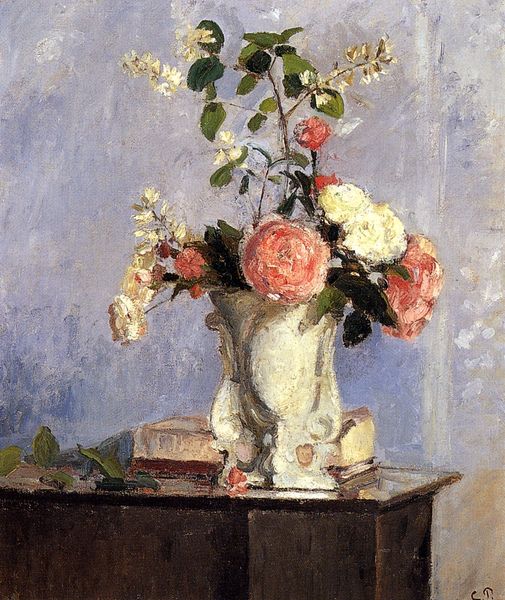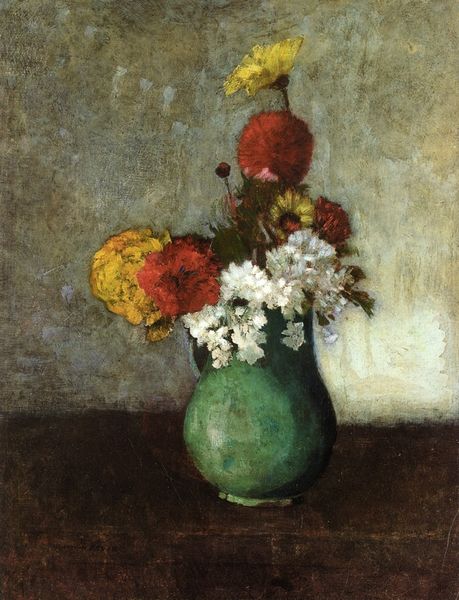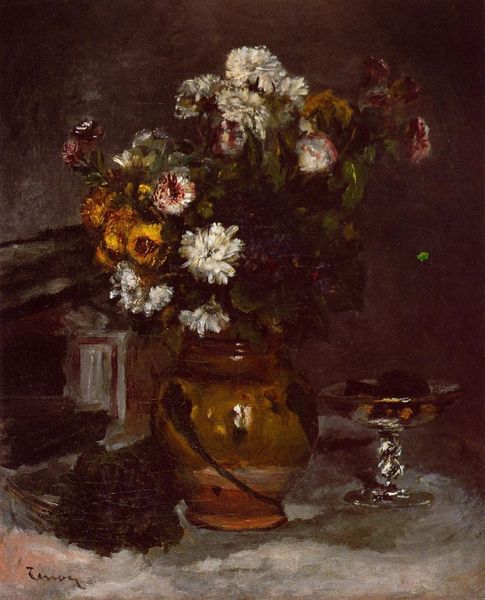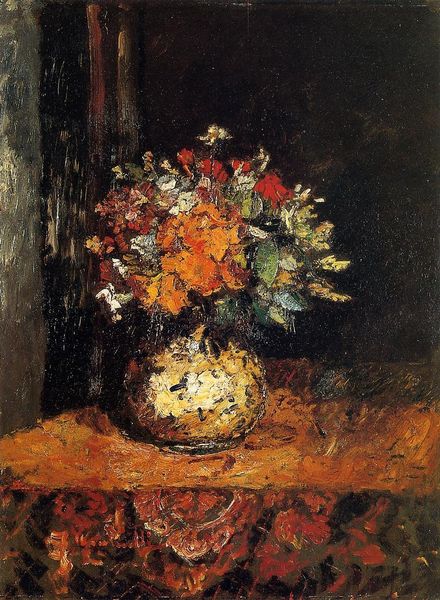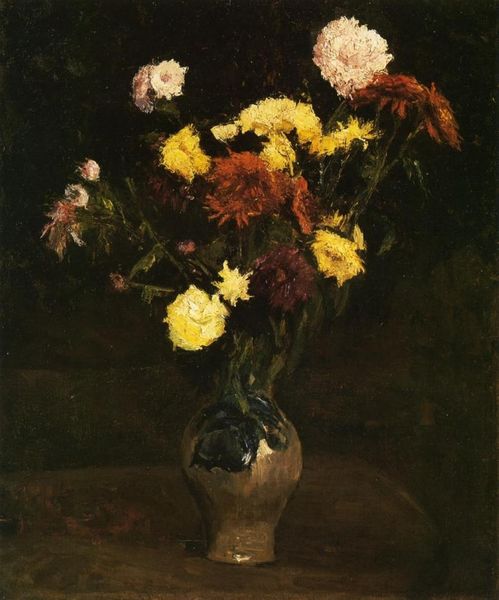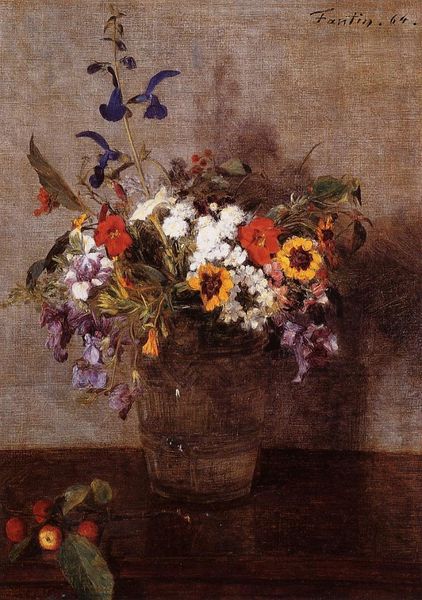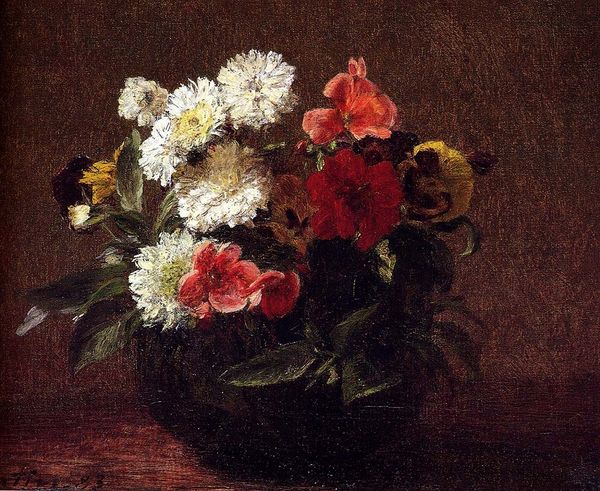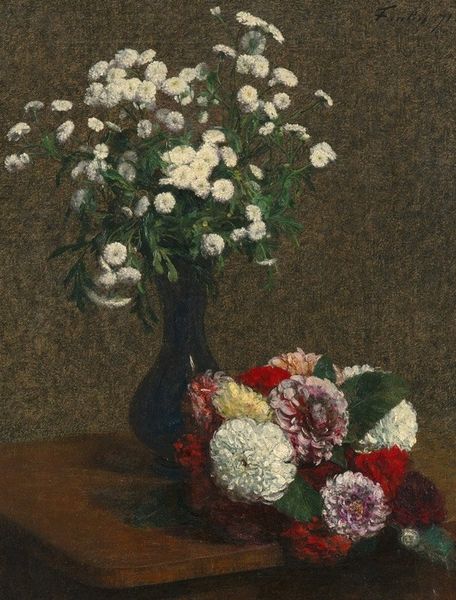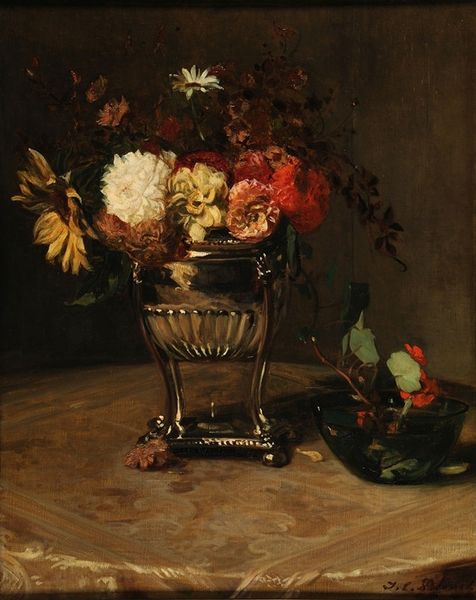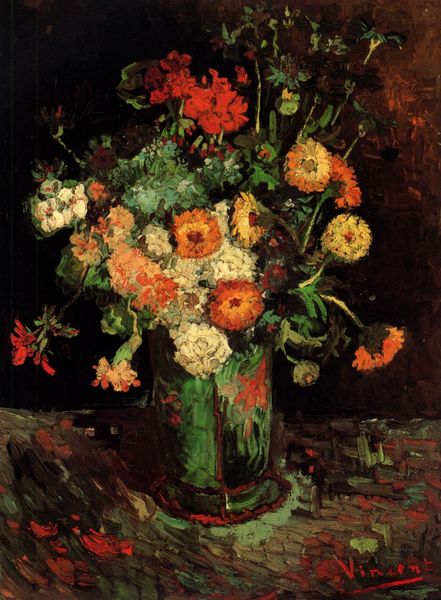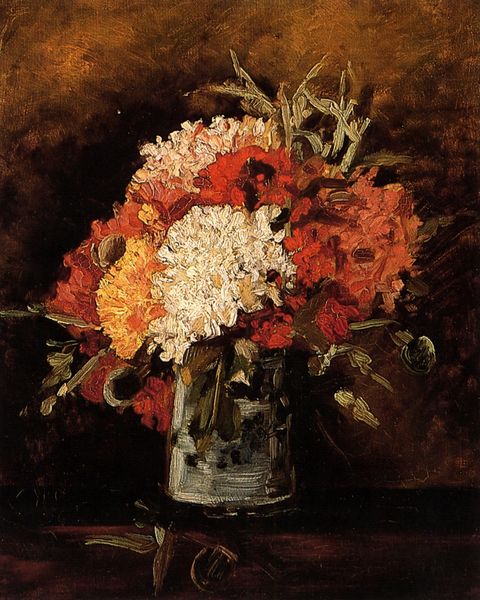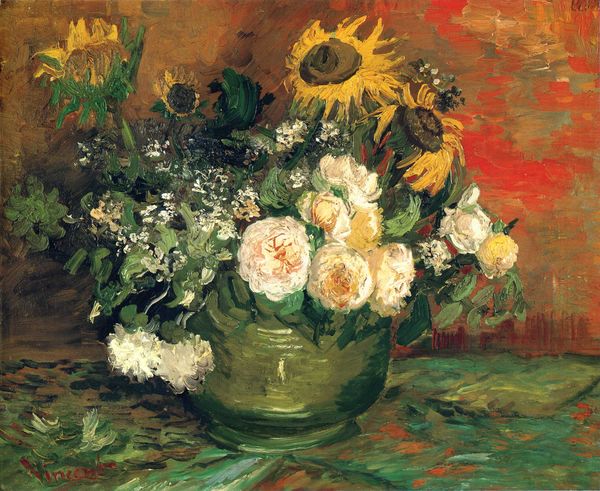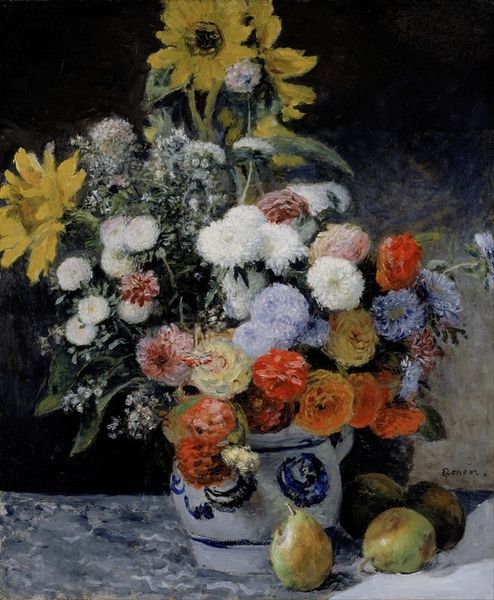
painting, oil-paint, photography, impasto
#
portrait
#
painting
#
impressionism
#
oil-paint
#
photography
#
impasto
#
mixed media
Dimensions: 50 x 61 cm
Copyright: Public domain
Editor: "Chrysanthemums In a Chinese Vase," painted by Camille Pissarro in 1873. It's oil on canvas and currently in a private collection. I find the juxtaposition of the delicate flowers with the ornate vase and those somewhat drab books incredibly striking. What story do you think this painting tells? Curator: I see this work as Pissarro engaging in a dialogue about the commodification of culture during a period of intense global exchange. The "Chinese vase," a Western appropriation of Eastern aesthetics, becomes a focal point, drawing our attention to questions of authenticity and cultural value. Editor: So, the vase isn’t just a decorative element? Curator: Not at all. Think about France in 1873 – the height of colonialism. The presence of that vase speaks volumes about power dynamics and the exoticization of Asian cultures. The chrysanthemums themselves, though seemingly natural, were carefully cultivated and arranged, reflecting societal control over nature. What about the books? Editor: Right. They are sitting at the bottom of the painting. How are we meant to interpret this relationship? Curator: Yes! They are arranged beneath the flowers. How does their placement inform our interpretation of this "natural" and "exotic" display? The "Chinese Vase" feels less like an innocent still life and more like a carefully constructed commentary on imperialism. Editor: Wow, I’d never considered all of those layers. So by positioning a familiar still life painting, we can actually consider what messages of power, wealth, and colonial influence might have been transmitted to contemporary audiences? Curator: Precisely! By considering the historical context, the work becomes a potent visual statement about a complex moment in history. Editor: Thanks so much for sharing your insights. It has encouraged me to rethink the role that context plays when appreciating art.
Comments
No comments
Be the first to comment and join the conversation on the ultimate creative platform.
